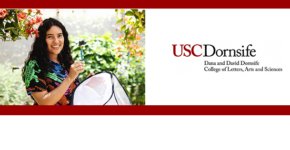 Everyone enjoys beautiful things, but this can be a problem for certain species.
Everyone enjoys beautiful things, but this can be a problem for certain species.
Laura Melissa Guzman, Gabilan assistant professor of biological sciences and quantitative and computational biology at the University of Southern California Dornsife, explores why.
Professor Guzman is a computational ecologist, originally from Bogotá, Colombia. She uses quantitative and computational tools to learn about patterns and processes in biodiversity to inform conservation actions. Guzman was a Liber Ero Postdoctoral Fellow focusing on estimating changes in pollinator distributions to prioritize areas for conservation. She was also awarded the Early Career Award from the Canadian Society of Ecology and Evolution, and the Young Investigator Award from the American Society of Naturalists.
Pretty Butterflies Can Be a Problem for Scientists
Millions of “community scientists” collect and share data about butterflies and other insects, which helps scientists study biodiversity and population trends. However, understanding potential biases of this data is crucial.
Just as humans are biased towards attractive people, this bias also extends to the insect world.
When we compared two popular community science platforms, eButterfly and iNaturalist, we found that on iNaturalist, engaging butterflies with captivating markings that makes them easy to identify are reported more frequently than obscure species with no distinct qualities.
The difference lies in how the platforms gather information and document sightings.
On iNaturalist, community scientists are encouraged to share photos of butterfly sightings so experts can verify the species. Information uploaded without a photo or with unclear image cannot be verified, limiting the number and type of species in the database. Species that are difficult to identify or photograph may be underreported.
On eButterfly, participants can report sightings through a simple checklist that asks when, where, how and what kind of butterfly species was observed. This method provides a more comprehensive account of all species. The catch is participants must accurately identify the species they report, which can be challenging for beginners
Butterflies from the two largest families, the brush-footed butterflies which includes monarchs, which are easy to identify and photogenic, and gossamer-winged butterflies with delicate aspects, were often overreported on iNaturalist. The most underreported species belonged to the family Pieridae, which includes the cabbage white butterfly, which are common and not very engaging.
There was no difference in species reporting trends among users in the east and west coast, indicating similar biases among users.
Overall, we found that 34 species were often underreported and 53 were frequently overreported on iNaturalist compared to eButterfly.
Read More:
EDS Lab at USC

Leave a Reply